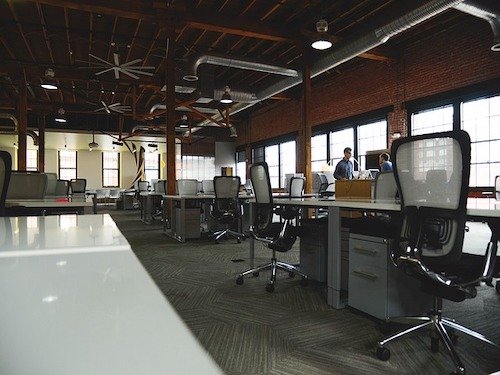
How Your Building’s New Common Area Is Affecting Your Office Rent
Dec 13, 2021


When looking at a new commercial property, one of the first steps to evaluating a new space is reviewing the square footage. However, many don’t realize there is a big difference between rentablesquare feet and usablesquare feet. While this might seem like a straightforward calculation, it unfortunately doesn’t always end up being so simple, particularly when you are in a multi-tenant building.
Usable square footage is defined as the actual space your business occupies from wall-to-wall. Usable square footage does notinclude common areas like: the lobby, communal restrooms, stairways, storage rooms, or shared hallways. For tenants leasing an entire floor or several floors, the usable square footage would include the hallways and restrooms that exclusively serve your floor.
The rentablesquare footage is basically your usable square footage plusa portion of the building’s shared space, A.K.A. anything that is outside of your occupied space. As a tenant in a commercial space, you pay for a portion of the shared space and thus your monthly rent is always calculated by rentable square footage. A helpful tool that tenants and landlords like to use to understand the difference between a building’s rentable square feet and usable square feet is called the “load factor.” This is a number based on the percentage of common area found within the building. It’s then calculated by dividing building’s total rentable square feet by the total usable square feet.
Although, most building owners use BOMA (Building Owners and Managers association) standards for guidelines, these are not state-regulated and the guidelines to determine exact square footages are can vary greatly depending on the landlord’s interpretation of what should be included or not.
Because San Francisco has smaller floor prints (typically under 14,000 square feet) San Francisco’s load factors typically range between 20 and 40 percent. That means if you physically measured the interior of your office suite, you would find that you are shortof that amount.
Today, office buildings, particularly as seen among technology companies, are adding a number of new common area amenities, like co -working facilities, conference rooms, community social areas, even gyms and coffee bars! With a number of tenants maximizing their office space by implementing an “open plan” design model, more employees within one space are utilizing more of the common areas over individual office space to get some breathing room where they can concentrate.
As a result, load factors are skyrocketing – particularly when buildings exchange hands. The first thing that a new owner looks for when they purchase a commercial property is how they can maximize existing rent. These new common area additions are necessary to maximize a building’s space and give tenants an attractive offer where employees can work outside of the rentable square footage.
If you are an existing tenant that would like to renew your lease, be warned that you could be in trouble. A client of mine that I helped relocate, moved into a building that just sold. He saw his rentable square footage skyrocket from 4850 square feet to 6,770 square feet. They were told that the old owner had mis-measured the space initially, and that between the recalculation of the space and the additionof new common area amenities, that his space was now calculated at a higher number. Between the higher square footage and the much higher rental rate, they are now forced to consider moving their office again.
If you are a new tenant going into a new building that has these common area amenities, find out if your employees will actually use the extra space. Often times, these common area enhancements are only used by a small group of individuals and may not be necessary for your business. If you are a smaller firm and your employees do not use the common areas, then unfortunately, you are paying for space that can really tack on added business costs for no real benefit in return.
Written by: Hans Hansson [email protected]Hans Hansson is President of Starboard Commercial Real Estate. Hans has been an active broker for over 35 years in the San Francisco Bay Area and specializes in office leasing and investments. If you have any questions or comments please email [email protected] or call him at (415) 765-6897. You may also check out his website, https://www.hanshansson.com





